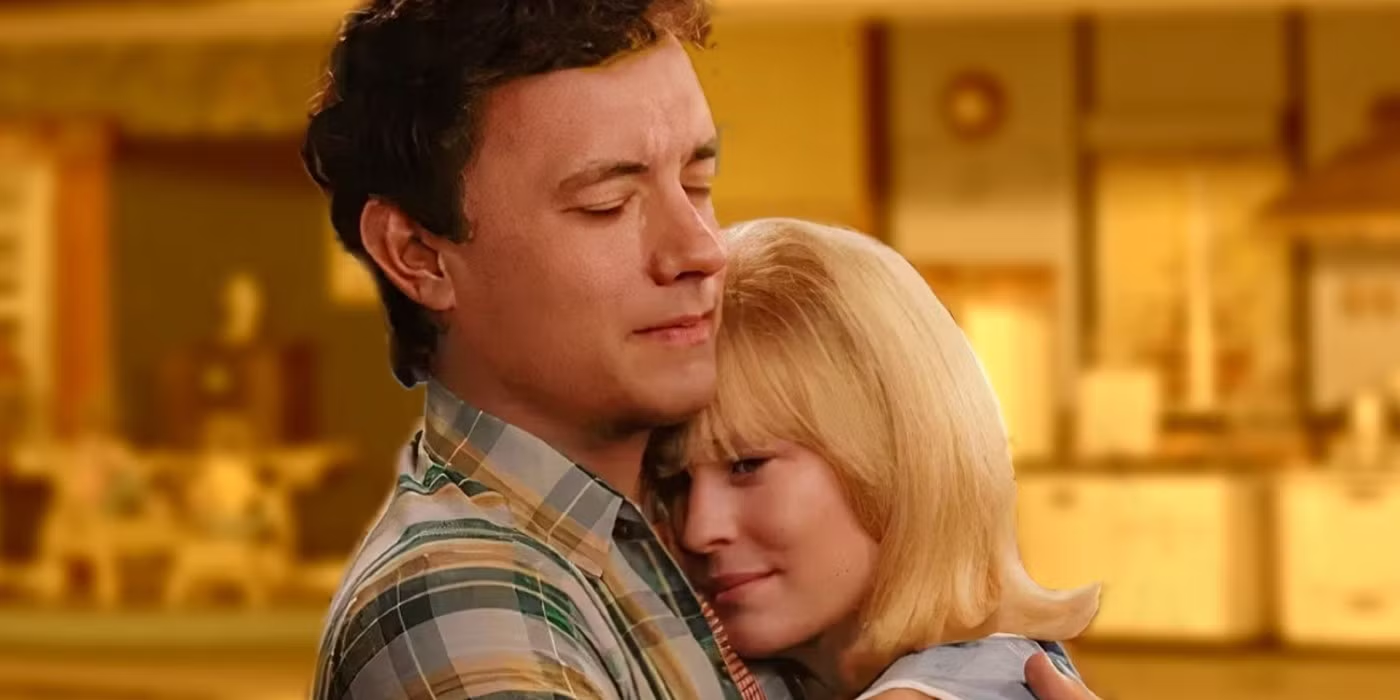Tom Hanks reunites with director Robert Zemeckis of the film “Forest Gump”(1994) in an adaptation of the graphic novel Here by author Richard McGuire, as Robin Wright completes the reunion. Utilizing one room as the same framing device, we are placed in one corner of the universe over thousands of years. This innovative concept could have worked for me if the script hadn’t been such a downer. The father (Paul Bethany) is a mean-spirited grouch and bully. At the center is Richard his son (Tom Hanks), a talented artist, who begins following in his father’s footsteps as far as ‘his way or the highway’ attitude is concerned. Unfortunately, the continued ‘depressing script’ didn’t work—as boredom set in.

Viewing the multiple families in the house became monotonous, without much lead-in; how are we supposed to care about the wacky couple in the ‘lay down daddy chair—which later becomes the invention of the Lazy Boy chair? The American Indian couple is shown growing up with their family, yet the script doesn’t offer much detail. Zemeckis’s camera is locked in one to capture the time frames with the added effects of a green rectangle to guide our vision to the next frame. Talk about annoying; I want to be the master of my eyesight when seeing a film, not be forced to follow the director’s sequences. Again, it is annoying and repetitive.
Richard’s mother, Margaret is played by a devoted Kelly Reilly, “Yellowstone” (2028-2024). She caters to her husband, of which I thought she was miscast as she appears too young (age 47) to play Tom Hanks’s (age 68) mother, even though their main scenes are when he’s a teenager. We see joy, pain, loss, anticipation, and regret, all while each is stuck in this singular place. While watching, I was reminded of the film “Tree of Life,” directed by Terrence Malick, as beautiful moments are brought to life, although Zemeckis may be too immersed in the technology of digital de-aging, which causes a shift in tone that becomes stifled.
Major historical events are seen on the families’ television or heard on the radio, but this isn’t a history lesson; it’s an “if these walls could talk” look at the lives lived in the cozy home. It’s a smart idea, yet, one is constantly watching too many words, people or videos to keep the film in cohesive order, frankly it’s overkill and exhausting trying to watch every little thing. When I watch a movie, my eyes shift to everything in a frame, even the darkest coroners as I’m looking for a mic, a cord, a shadow of a film crew member, etc. I didn’t particularly appreciate watching a movie in which I had to look at specific rectangles, etc. The process interfered with my film critiquing, which I was uncomfortable with. Robert Zemeckis reminds viewers of who owned the land before them, although when he shows a black family, the scene is cringe-worthy as the father is meticulously explaining to his young adult son what to do whenever the police pull him over. Saying, always keep your hands in sight, tell the officer what you are going to do with your hands. As to prevent his son from a police shooting as has happened in the past to black men. Considering the film crashes into this scene moments after some clichéd, sentimental moment with the white family, who are the main focus here, it is a tone-deaf transition. The entire film, in fact, is tone-deaf. It’s one of the few times I wanted to get up and leave the theater.
Richard dressed as Benjamin Franklin for a Halloween party and then morphed into a colonial-era scene is weird, just as in the scene where a leaking roof, dripping puddles of water on the floor, transitions into a pregnant Margaret’s water breaking in the same spot. These moments cause the film to feel trapped, and there are many of them, as the restraints of its concept are too defined to make them come to life.
Any movie filled with scenes that are about 30 seconds when interrupted by another boxed frame taking us somewhere else in time, with no rhyme or reason for the editing choices, doesn’t work as we have no opportunity to get to know any of these characters—and in my movie critiquing experience that alone never works.
Cast:
- Tom Hanks as Richard Young
- Robin Wright as Margaret Young, Richard’s wife
- Paul Bettany as Al Young, Rose’s husband and Richard’s father
- Kelly Reilly as Rose Young, Al’s wife and Richard’s mother
- Michelle Dockery as Pauline Harter
- Gwilym Lee as John Harter, Pauline’s husband
- Ophelia Lovibond as Stella Beekman, a pin-up model
- David Fynn as Leo, an inventor
- Leslie Zemeckis as Elizabeth Franklin
- Lauren MeQueen as young ElizabethBeau Gadsdon as teen Elizabeth
- Joel Oulette as Indigenous Man
Directer:
Robert Zemeckis
Screenplay:
Eric Roth, Robert Zemeckis
Sarah Knight Adamson© November 1, 2024
